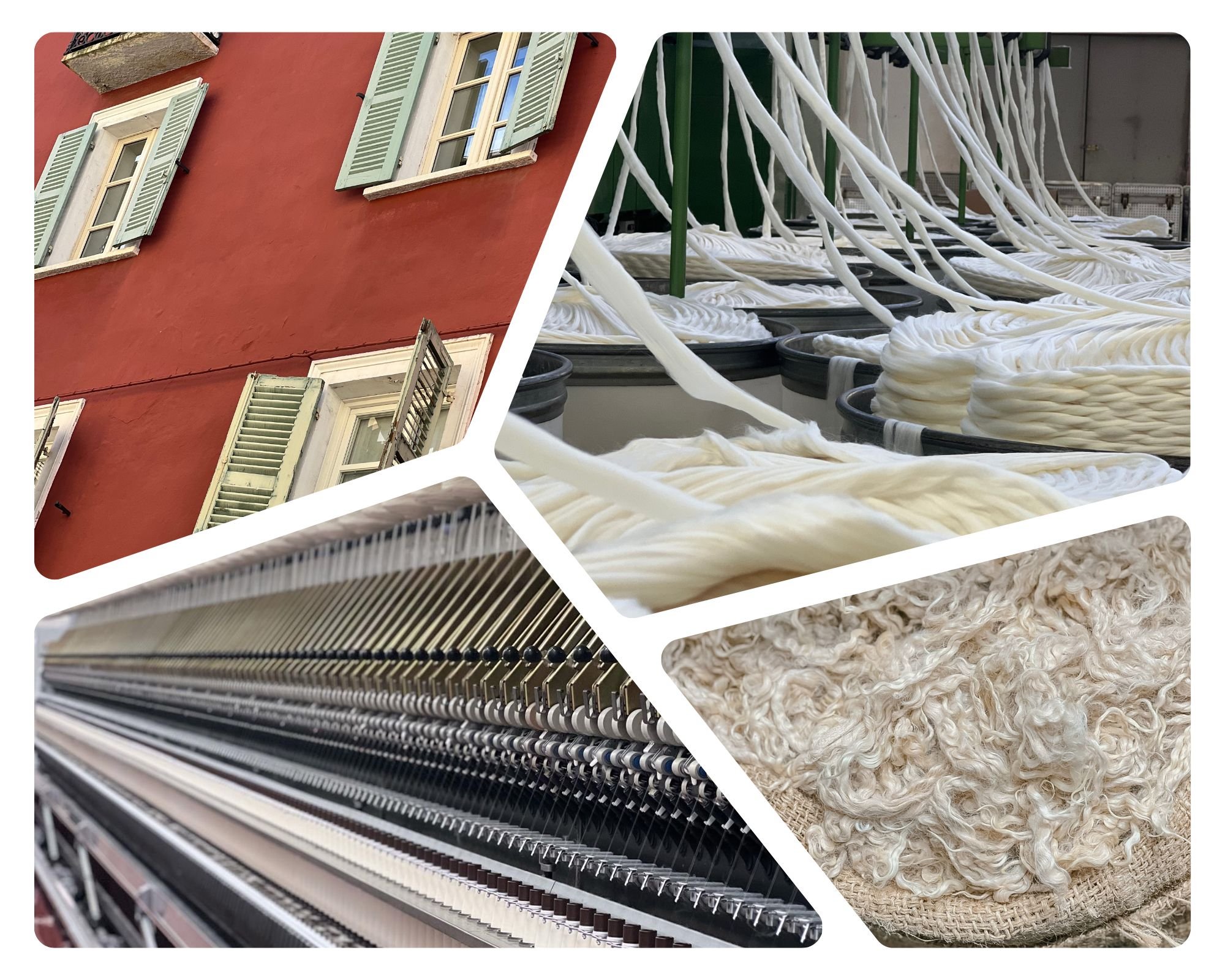Empowering the Future of Mohair: Insights from the NFC Conference in Biella
In September, I was privileged to represent the Mohair Industry at the Natural Fibre Connect (NFC) Conference held in Biella. This event, organised by the Schneider Group, gathered key players in the Natural (animal) Fibres Industry under one roof. The conference served as a unique platform, uniting the Wool, Mohair, Alpaca, and Cashmere sectors from around the globe, along with experts spanning the entire value chain, policymakers, and trend forecasters. The focus was resolutely on charting the future of our industry.
The key takeaway from the conference was the urgent need to join forces in pursuit of a shared vision for a resilient, sustainable, regenerative, community-driven, and eco-conscious Natural Fibres Industry. Such in-person gatherings are rare, and the opportunity to listen, learn, share, and network was simply invaluable. We hope it will inspire more collaborations and engagements in the future.
Leading up to the conference, we were fortunate to explore the mills in Biella. You can find the complete list of the host visits on the NFC website. What struck us most was witnessing the same dedication, craftsmanship, and passion mirrored in the production of finished fabrics as we invest at the grassroots level.
These mills, which cater primarily to the luxury fashion market, are known for weaving woollen menswear and stand as some of the last remaining vertically integrated textile companies in the area, with a few scattered throughout Europe. Their distinctiveness lies in their ability to industrialise the artisanship of Italian textile manufacturing, overseeing every step from raw materials to the final fabric. Despite their relatively small scale, these mills excel at meeting client needs for smaller runs of high-end, specialised weaving, finishings and unique material compositions.
What became evident is that the luxury fashion industry, though tiny, forms the core market for these mills alongside high-end private tailoring. These mills emphasise the necessity of guaranteeing the source of their fabrics, where traceability, sustainable and ethical production, and processing accreditation are non-negotiable prerequisites. The focus is shifting towards regenerative land management and community initiatives at the farm level and throughout the supply chain.
It is important to note that these expectations and standards are not only asked for at the farm level. They are a prerequisite for partners at every stage of the supply chain. The mills visited have made substantial investments in solar energy, water recycling plants, nature conservation, and community initiatives. Companies like Zegna and Piacenza, both family-run over generations, have taken it upon themselves to restore forests and public parks in their areas. Their commitment to preserving natural fibres is unwavering, and they hold fast to the quality of their fabric ingredients, just as we cherish the essence of rain, our animals, our families, and the communities supported by the mohair industry.
There is a pressing need to share this narrative, reiterated throughout the conference and highlighted by keynote speakers. It was made very clear that they are not interested in substituting natural fibres for synthetics and attach as much of their identity to the quality of the ingredients of their fabrics as we attribute to rain, our animals, our families, and the communities that the mohair industry supports. There is a huge need for us to share this story. Education, both with the supply chain and a wider audience, is key. This came up repeatedly in the conference’s lead-up and was highlighted by keynote speakers.
One eye-opening realisation was the relatively small scale of our Mohair industry compared to the dominance of wool in Biella, which is the hub for luxury weaving of natural fibres in Italy. Like adding seasoning to a dish when cooking, Mohair is being added to yarns and fabrics in a similar way; Playing a vital and revered role but doesn't constitute the primary component. Wool takes centre stage, even though it is relatively modest compared to other components in the fashion and textile industry. The wool industry thrives on collaboration, recognising the value of sharing resources and research and understanding that we are interconnected and depend on each other for survival and prosperity.
As part of the Mohair Industry, we have an opportunity to engage and participate in vital collaborations and partnerships within the Natural Fibres Industry. This engagement emphasises collective strength while preserving our unique attributes and origins, which are vital to celebrate and promote.
We must acknowledge that no one else can tell our Mohair story. We carry the responsibility and knowledge to step up and actively engage. Since we largely produce and process the global mohair supply, right at the beginning of the fashion supply chain, we have limited control over where our mohair goes and the narrative surrounding its proudly African heritage. Moreover, exporting most of the world's mohair in a raw form (tops) leaves us vulnerable to external market fluctuations. Fortunately, the mohair supply is small enough that engaging with the right markets and partners can maintain mohair's relevance, desirability, and relative price stability.
One resounding message throughout the conference was the need for education. We can't presume that our customers understand the meticulous care given to each process step. Mohair remains a small industry with limited visibility and voice, making it essential for us to take control of our story, refine our communication, and ensure that our messaging surrounding Mohair is exceptional. We must show the fashion and textile industry that we are the fibre they seek right now, aligning perfectly with all their requirements and desires.
The NFC Conference commenced with a growers' video, with Bret Walker representing the Mohair industry and delivering a compelling and well-received narrative. The day featured various speakers addressing topics ranging from policy to land management, concluding with a growers-panel discussion.
In closing, we have a remarkable opportunity as the Mohair Industry to be part of reshaping the future of natural fibres and elevate our voice on the global stage. Being a small, niche, ancient and African natural fibre, we have all the components needed to engage in the current movement towards considered and sustainable sourcing, which has impact and longevity. We need to converse with like-minded partners, which not only encourages demand for our fibre but openly educates and celebrates the process and origin and encourages all stakeholders in our supply chain to feel heard and proud of being part of an industry that stands for leaving a lasting legacy; a road map of where we have come from and how we choose to step into tomorrow.
Frances van Hasselt






